Everyone still considers backlink as the most important ranking factor. With that being said, we often come across many people who tend to build thousands of backlink for their website and still the results obtained are zero.
It’s because of the common fact that most people don’t really perform backlinking following a particular protocol or order. A proper backlink is a complex process and requires much orientation in a tuned manner.
Below mentioned are the several aspects and some of the parameters that one should bear in mind whilst building links for any particular website.
1. TRUST FLOW

It is one of the most important metric and KPI which is often used in off page seo activities. Trust flow initially finds its existence from Majestic. In short, it is also referred to as TF factor.
Trust flow basically denotes a score between 0 to 100, which determines how trustworthy the incoming links are; which are directed to your website or landing page. Trust flow is a relative score and it’s never judged based on the number of incoming links.
Below mentioned are some of the ways by which the trust flow can be improved for any given website: –
● Acquiring a backlink from a high domain authoritative website
● Acquiring a backlink from a reputed website
● Brand mentions from trustable sources
● Backlinks which will create good user experience and value to the topic
2. CITATION FLOW
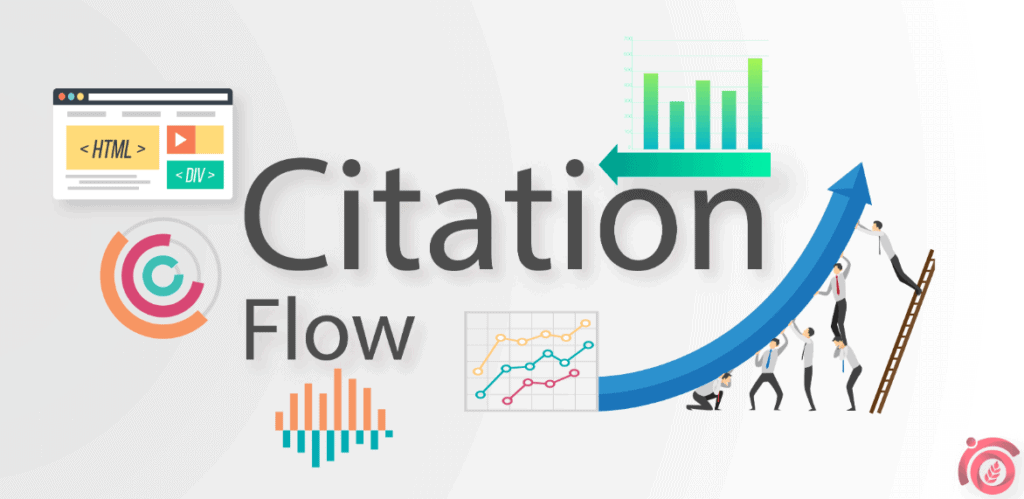
Citation flow is also an important metric when it comes to backlink analysis. In short, it is also known as the CF factor.
Citation flow also denotes a score between 0 to 100, it determines the relative count of the quantity of the backlinks pointing to the website. CF factor makes sure that good and valuable link juice is passed without any spam.
Below mentioned are certain steps which will help in improving the citation flow factor: –
● Tiered backlinks will help in improving the citation flow
● High authority link building submission will help in hiking the CF score
● Proper off-page seo will help in improving the score
● White label link building will help in improving the CF score
3. GOLDEN RATIO FACTOR
Golden ratio factor is the division of TF score by CF score. The ideal value has to lie within 0.6 to 1.5, it is to be noted that more the value is nearer to 1, more will be the benefit.
Mathematically, Golden Ratio = TF/CF and the value should be between 0.6 – 1.5; the golden ratio factor is also considered as a link juice equation.
4. REFERRING DOMAINS (RD)
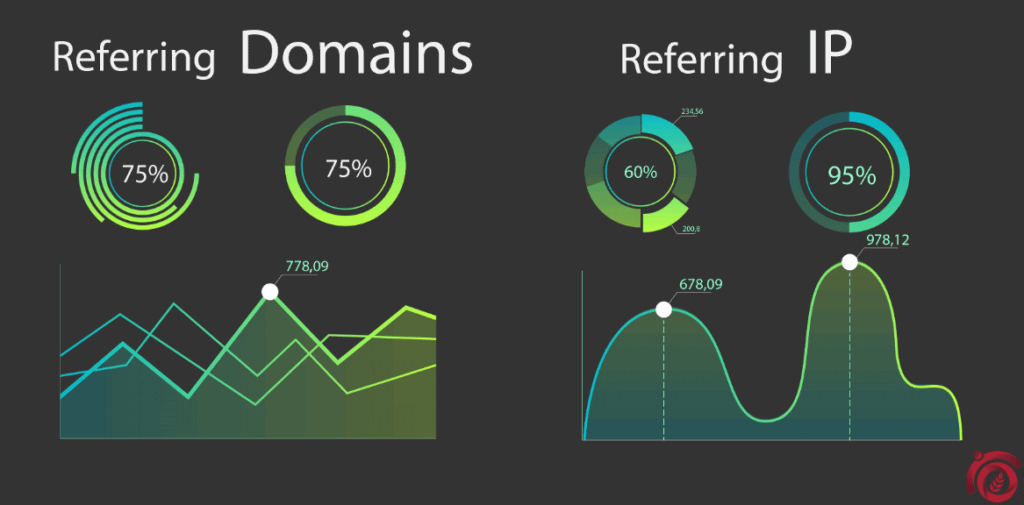
Referring domains are a part of advanced seo techniques and based on a correlation study it has been found that referring domains contains strong positive correlation and helps a lot with website ranking.
It has also been analyzed that Referring domain values outrank the total number of external backlink values. Now the question is – What is a Referring Domain?
Well, referring domains are the unique domains from which you have successfully acquired a backlink. With that being said, a referring domain will only get counted as a referring domain if the link acquired is a valid link without any possible noticeable issues.
Why Referring Domains are an Important Factor?
Referring domains are an important factor as because it justifies with the fact that link acquisition will occur one per domain and it will be treated as a unique domain. Furthermore, referring domains will only be triggered if the acquisition is successful with a proper link juice transfer.
Below mentioned are the benefits for having growth in referring domain score: –
● Better SERP visibility
● Enhanced SERP exposure
● Good ranking benefits
● Will make your website more competitive
● Will also help in ranking for the semantic terms if the referring domains for the page is high
5. REFERRING IP
Referring IP is an important metric for seo link building. This also has the same functionality as that of the referring domain where links have to be acquired from a unique domain with good authority and less spam score.
The only difference lies within the fact that with referring IP one also needs to acquire a link from a unique IP as well. In other words, not only you need to acquire a link from a unique domain but also the IP shouldn’t be repeated.
6. LINK JUICE
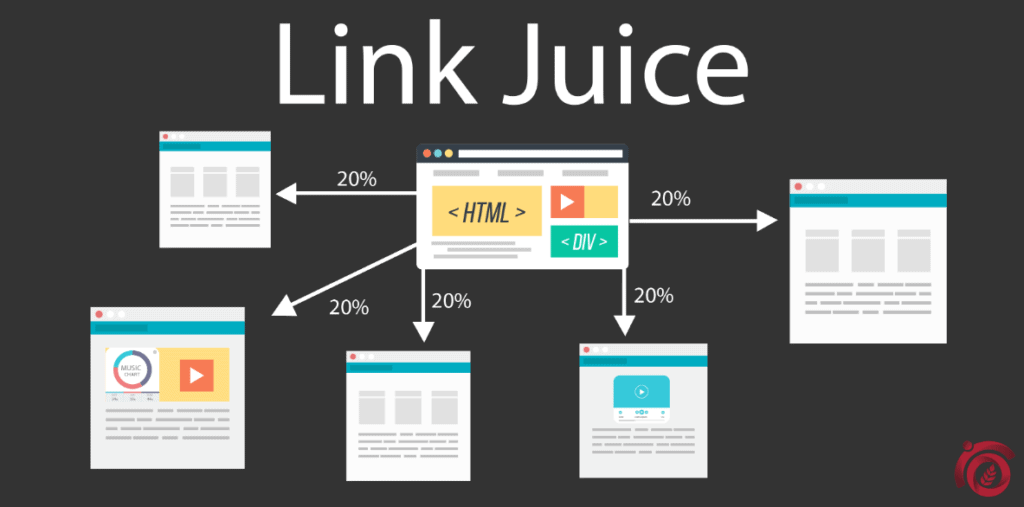
Link juice is a relative term which is used for defining the strength or the weight of the value which is passed with the backlink acquisition. Link juice is a virtual concept which helps in defining the seo strength which can be acquired with any type of backlinks.
ractically speaking, link juice can be mathematically defined as –
Link Juice = TF/CF; Link Juice = Referring IP/ Referring Domain
Here are some quick facts –
● TF/CF score should be between 0.6 and 1.5 for having the maximum benefit.
● The TF/CF score should be tuned closer to 1, more it is closer to 1 more is the benefit
● If the value of referring Ip/referring domain is greater than 1 then it will indicate that the link juice power is super high
● If the value of referring Ip/referring domain is between 0.5 – 1 then it will indicate intermediate link juice power
● If the value of referring Ip/referring domain is between 0.20 – 0.49 then it will indicate mild link juice power
● If the value of referring Ip/referring domain is much lesser than 1 then it will indicate poor link juice
Some additional quick facts –
●Link juice of a certain page always gets divided in equal ratio. Suppose you have a landing page with link juice score “x” and that particular page contains two outbound links (or internal links), then those two pages will get a share of “X/2” link juice on either page.
● Link juice value doesn’t pass if a no-follow tag is used
● Link juice is not affected by the speed of the website
● Link juice is not affected by any technical SEO aspects
● Link juice gets diluted if a no-follow tag is used for external links (this is based on PageRank sculpting algorithm)
Below mentioned are types of process which can be used for acquiring a link for off page optimization. The process and strategies are mentioned as under:
I. HIGH DOMAIN AUTHORITY (DA) SUBMISSION
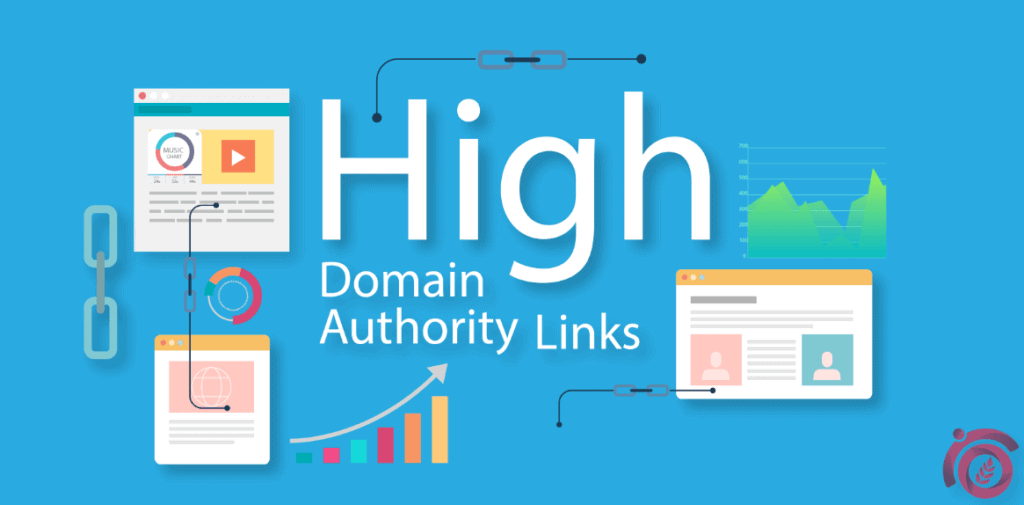
This process is simple, it just involves acquiring a backlink from a high DA site. The following are the benefits of a high DA submission:
● Helps in improving off-site seo score
● Helps in improving TF score
● Helps in transferring good link juice flow
● Helps in enhancing SERP visibility
II. BRAND LINKS

This process involves acquiring links on branded site via media, brand wire, PR application or a content promotion. Brand links can definitely help with multiple things, some of them are mentioned as under:
● It will help in improving the trust flow of your website
● It will help with EAT algorithm
● It will help in building trust with your audience
● It will make your business more connected and help in raising brand awareness
III. CITATION NAPL’S

Citation NAPL’s basically means listing your business on high authority websites which are sort of classifieds or business listings. The name NAPL’s means name, address, phone number and link. This process works by finding opportunities on high authority sites where you can acquire a backlink but you need to make sure that the submission contains NAPL for sure. Citation’s can help with the below-mentioned things:
● Citation serves as the basis of local link building strategies
● Citations also help in improving TF score
● It helps in referral traffic acquisition
● It also helps with product awareness
● Citation has a huge impact over domain authority and page authority and helps in improving them
IV. LINK WHEEL
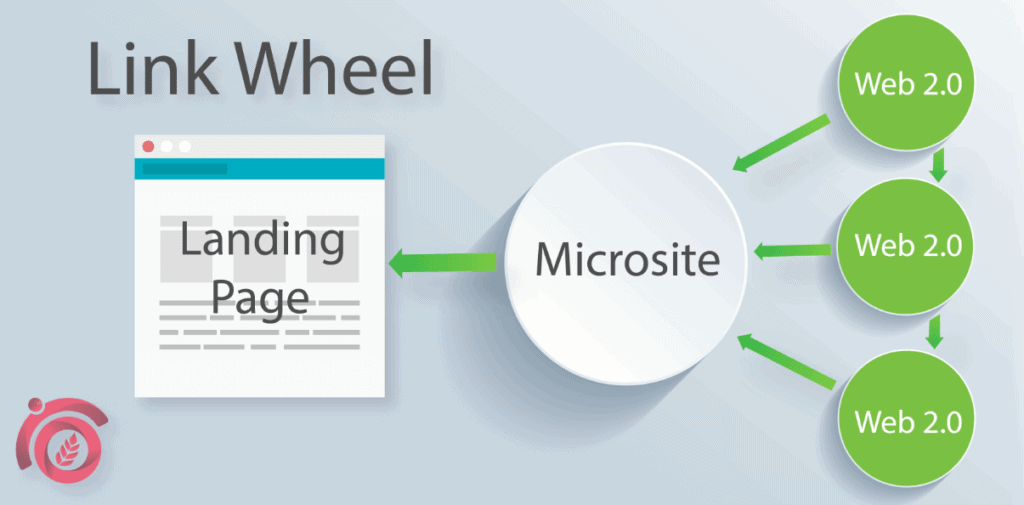
Link wheel is a process which works with article submissions or WEB 2.0 submissions which are chained together and linked with a microsite. If you want to perform a link wheel, the steps are mentioned as under:
Step 1: Start by creating 5 WEB 2.0 or articles submissions with at least 1600 words of quality contents.
Step 2:Make sure each submission contains two anchor text which should be relevant to your main focus keyword or the search term which you want to rank for. You can choose various types of anchors such as exact match, LSI, 2nd Tier LSI, partial match, long tail or naked.
Step 3: Out of the five web 2.0’s consider one as a microsite (one which has the highest DA and TF)
Step 4: Now it’s time to start the link wheel process. Start with the first web 2.0 and connect the first anchor text with the microsite and the second anchor text with the next web 2.0 submission.
Step 5: Repeat the entire process for the next four web 2.0 but make sure NEVER EVER connect the last web 2.0 submission with the first one. This is to ensure that search engines might not track the footprint. With that being said, connect the remaining anchor of the last web 2.0 with the landing page of your website.
Step 6: Now coming over to the microsite, connect the first anchor text with the homepage or root domain or your website. And connect the second anchor text with your main money page or landing page.
Now, the above steps will help in creating your first link wheel architecture. The below-mentioned points are some of the benefits of creating a proper link wheel:
● Link wheel will boost your SERP visibility
● Link wheel will help in ensuring link equity flow
● Link wheel will also help in a faster index of your backlinks
V. CHAMPION LIST SET-UP (SET-P MODEL)
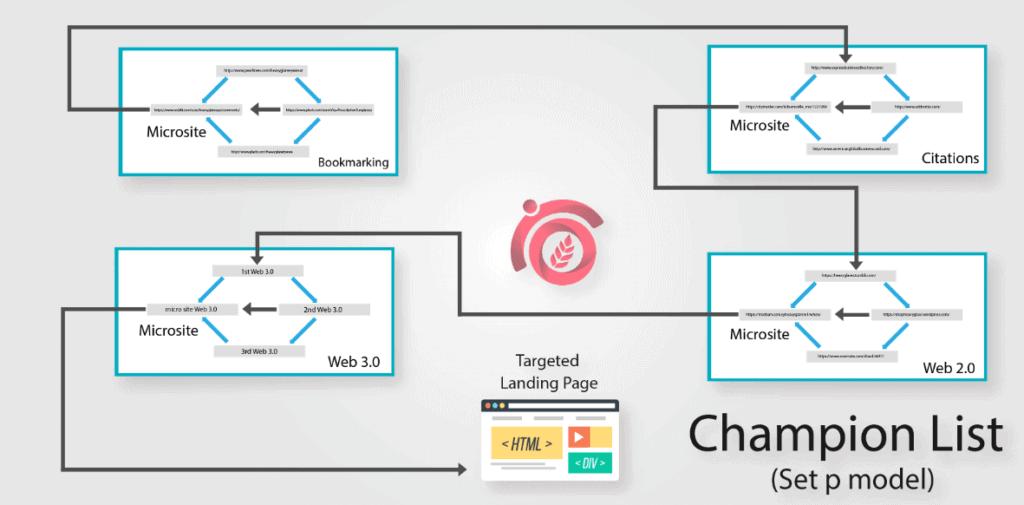
The champion list set-up is an advanced version of link wheel. The main concept is having 4 clusters with the first cluster containing 4 subsets of bookmark submissions, the second cluster containing 4 subsets of citation submissions, the third cluster containing 4 subsets of web 2.0 and followed by the last cluster which contains 4 subsets of web 3.0 submissions.
The exact steps for building a champion list set-up also known as set-P Model is described as below:
Step 1: Start by creating a first cluster which will contain 4 subsets of bookmarking or high DS submission. Make sure there is only one anchor text in all the submissions.
Step 2: Connect the first anchor with the second and second to the third and so on. Just make a note of it that champion list set-up doesn’t need to have a microsite.
Step 3: Connect the last subset with the first subset of the second cluster. Check the image for a more proper understanding. Make sure the second cluster should contain citation submissions.
Step 4: Repeat the above steps until you complete all the 4 clusters. Make the last connection of the fourth cluster and last subset connection with your landing page.
Once all the above steps are followed, this will make a complete champion list set-up ready. There are several benefits of a champion list set-up, some of them are mentioned below:
● Champion list setup will ensure more enhanced SERP exposure
● It will help in improving the link juice quality
● This will tend to provide better SERP visibility
● This will make sure your links are indexed well
● It will also help with semantic SERP exposure
VI. CHAMPION LIST 2.0
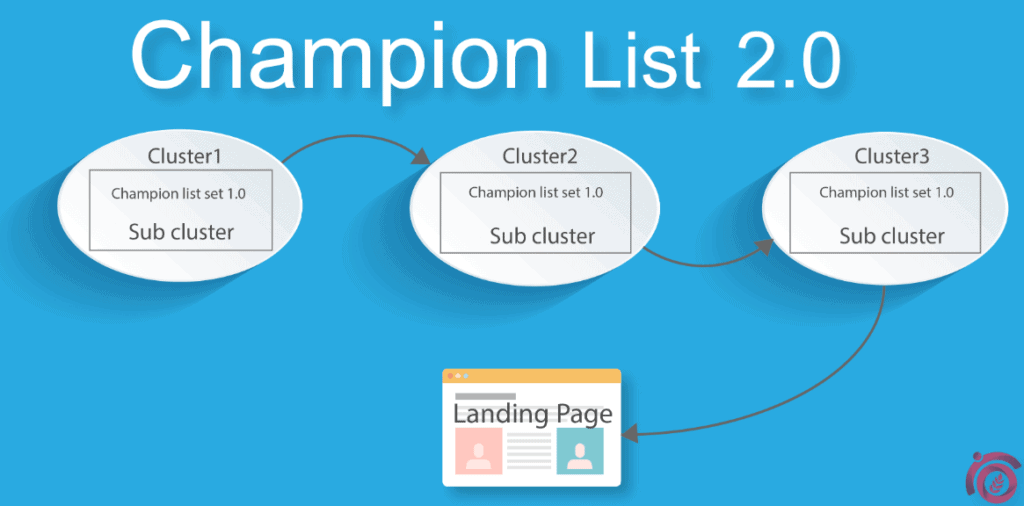
Champion list 2.0 is nothing but an extended version of a champion list setup. In champion list 2.0 setup, entire champion list setup will be counted as a supercluster, now in champion list 2.0, there will be a total of 4 supercluster. Each supercluster will contain a complete champion list set-up model.
In the champion list setup, the anchor connection of the fourth cluster was made with the landing page. But in champion list 2.0 setup, the fourth cluster anchor connection needs to be done with the first cluster of the second supercluster.
One astonishing benefit of this complex setup is to ensure semantic keywords ranking in SERP. This will also help with natural voice search optimization for long tail versions.
VII. CONTEXTUAL LINKS
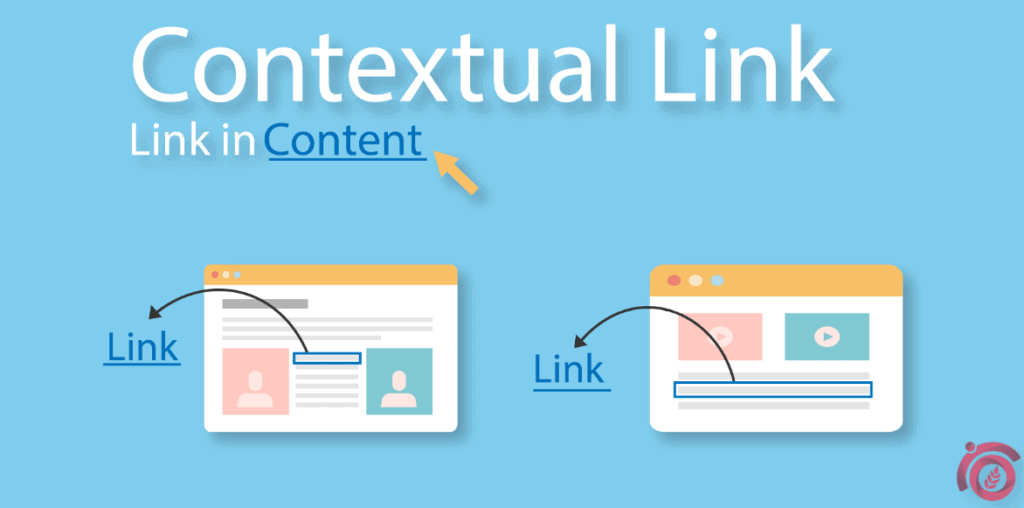
Contextual links are simple links which are acquired from a website having a proper context or a website where the user can add context in relation to their niche. This will help in improving the TF and CF score.
VIII. TIERED BACKLINKS (TBL)
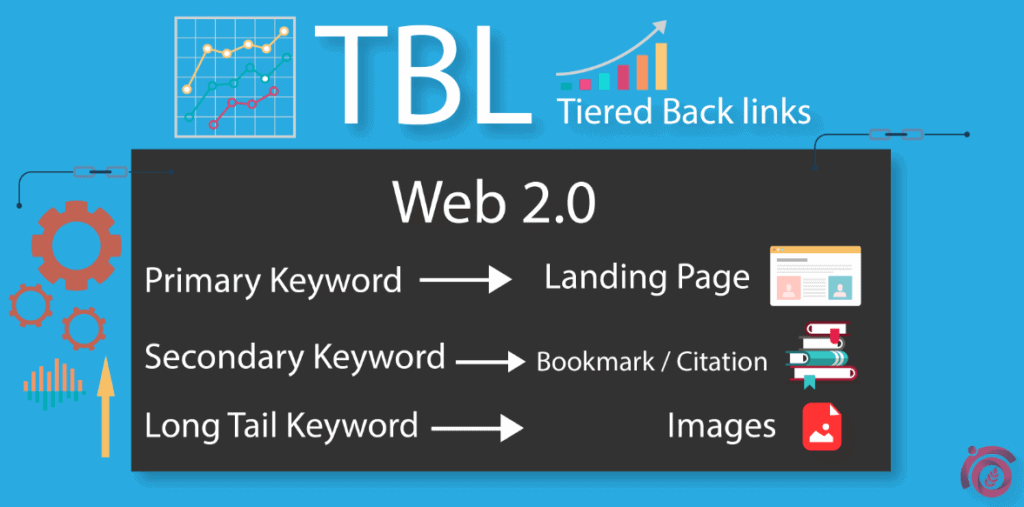
TBL is a type of web 2.0 submission with just minor modifications on the structure. The exact steps are mentioned below:
● The content should be approx 2000 words
● There should be three anchors within the entire web 2.0
● The first anchor should be an exact match keyword and it will be connected with the main landing page
● The second anchor will be an LSI keyword and it will be connected with a high DA submission link which is previously made
● The third anchor will be a long tail keyword which will be connected to an image submission
TBL helps with multiple things, some of those are mentioned as below:
● It will help in retaining link juice freshness
● It will help with freshness signal
● It will help with link juice equity
● This will definitely help in improving the SERP visibility
IX. REFERRING DOMAIN INTO PBN (RDP)
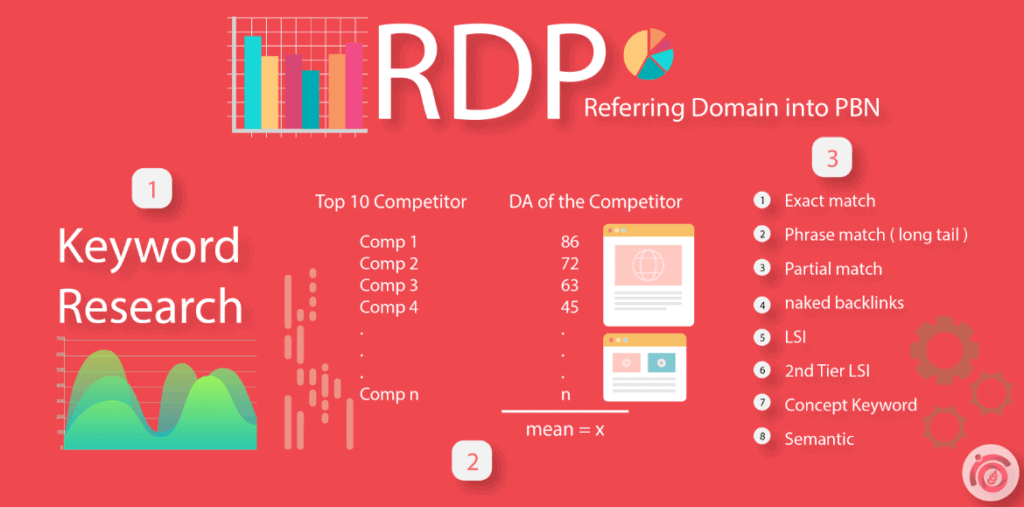
This is a concept of link building in which backlinks are acquired by analyzing the referring domains of the competitors. Professional link building consultant would definitely suggest for this. The steps are mentioned as under:
● Pick the search term or the keyword which you want to rank for
● Use it and make a query in Google search (Be sure to set the location as preferred by you)
● Pick out top 10 competitors based on Google SERP
● Pick their full URLs and analysis it in ahrefs. Make sure the mode is set to URL mode
● Now ahrefs will show you the value of the referring domain, make a note of it
● Repeat the above for 10 competitors
● Now calculate the mean average of all the 10 referring domains and make a note of the mean value
● The mean value which you will obtain would be your ultimate target for acquiring a link to your website
● Now, you can use link intersect model on ahrefs to find opportunities for acquiring a link and once you reach your target of the mean value, end the process
The main benefit of having this strategy is mentioned as under:
● This helps in improving the referring domains which help in improving SERP visibility
● This will also help in ranking for the terms which our competitors might be using (provided the semantics is done properly)
● RDP will also help in improving the DA and PA
X. KNN SET-UP
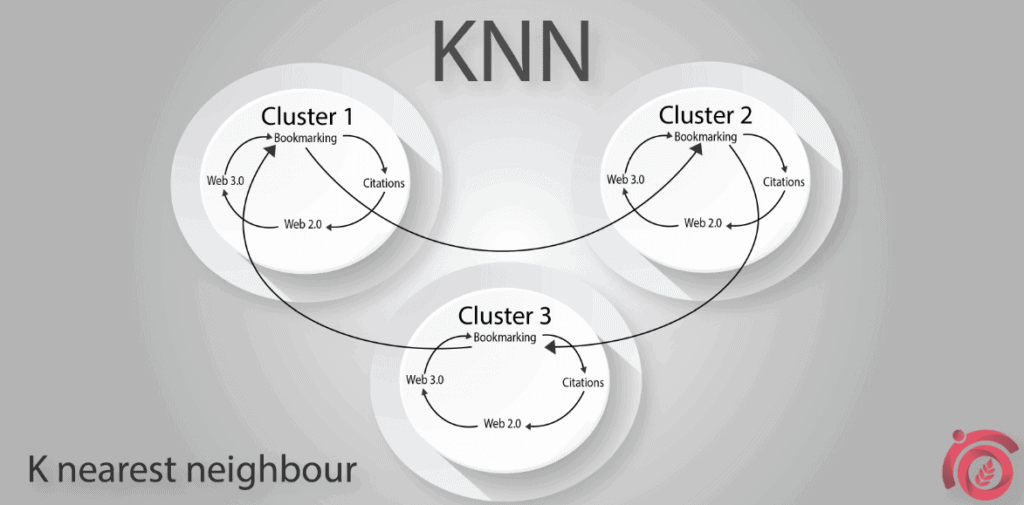
This is an advanced link building in SEO which works in three clusters. It looks a bit similar to champion list setup but the set-up scenario is a bit different. The exact steps are mentioned as under:
Step 1: Create cluster 1 which will contain 4 types of submissions which will be chained with each other. They are namely- bookmarking submission followed by citation web 2.0 and lastly web 3.0
Step 2: The last connection should be made on the first submission of the second cluster.
Step 3: Repeat the above process with three clusters in total and then link the last submission of the third cluster with your landing page.The overall benefit of having a KNN set-up is that it maintains strong link juice flow within a website’s architecture.
XI. SILO
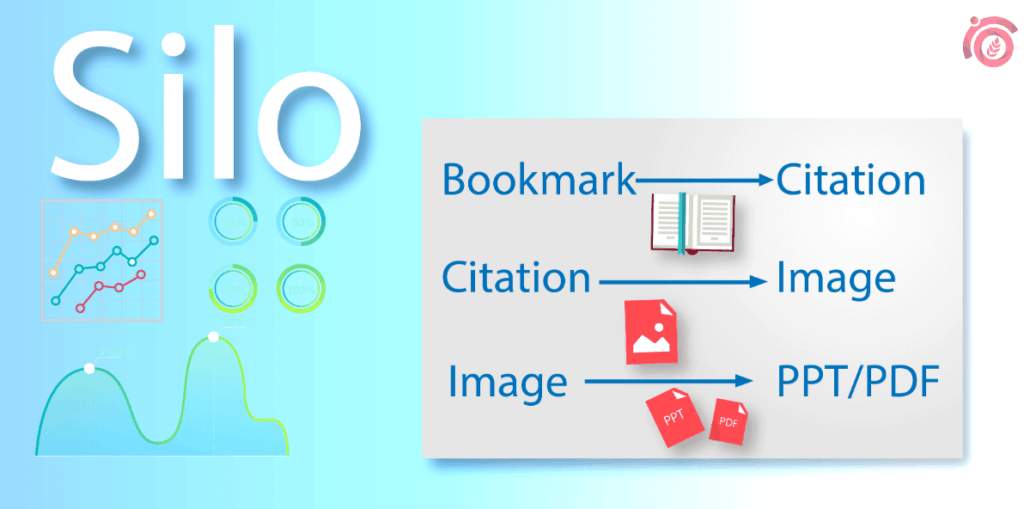
This is a form of tiered backlinking strategy. The process involves combining multiple submissions together for an enhanced effect. The exact steps are mentioned as under:
Step 1: If you are creating a bookmarking submission then use any of your previous citation submission as the landing page within your bookmark submission.
Step 2: If you are creating a citation submission then use any of your previous Image submission as the landing page within your citation submission.
Step 3: If you are creating an Image submission then use any of your previous PPT or PDF submission as the landing page within your Image submission.
Silo strategy helps in boosting the SERP appearance. Professional seo consultant will always suggest for having a silo architecture. The overall benefit of having a silo architecture is mentioned as under:
● It helps in forming up a tiered network
● It helps in maintaining link juice flow
● It helps in maintaining link equity flow
● It prevents spam flow if persists
XII. IN-LINK OFF-PAGE
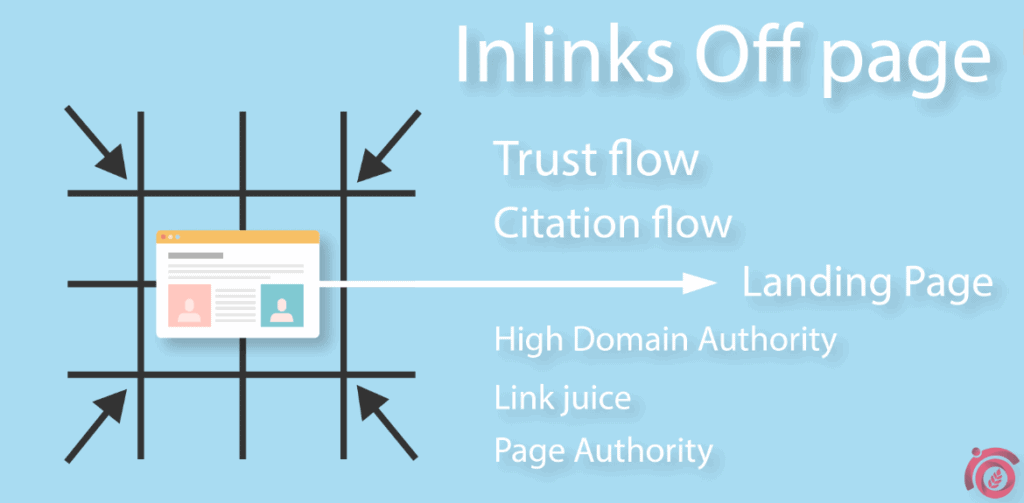
In-link is basically an approach where high links are directed to a particular landing page within a website which carries the most importance. If you have one special keyword and you typically want to focus on that particular page then in-link is the strategy which one should opt for.The sole benefit of this entire process is to get the money page or the landing page well ranked in search engines.
XIII. WEB 2.0
Link building types also include WEB 2.0 submission. This is a common submission type which is similar to article submission. A proper WEB 2.0 submission must follow certain rules and they are mentioned as under:
● It is preferable if the submission contains at least 1700 words.
● It must contain three anchors namely one exact match type, one long tail, and one brand keyword or semantic keyword
● The exact match keyword should be hyperlinked with the mapped landing page
● The long tail keyword should be linked with any tiered link (previous submission)
● The brand keyword should be hyperlinked with the homepage
Web 2.0 submission can provide a lot of added benefits, some of which are mentioned as under:
● This submission helps a lot in improving the rankings for the exact match search terms
● It helps a lot in improving the referring domain and referring IP value along with TF and CF score
● It helps a lot in improving the SERP exposure for the overall family of the keywords which are being used within the entire website
XIV. WEB 3.0
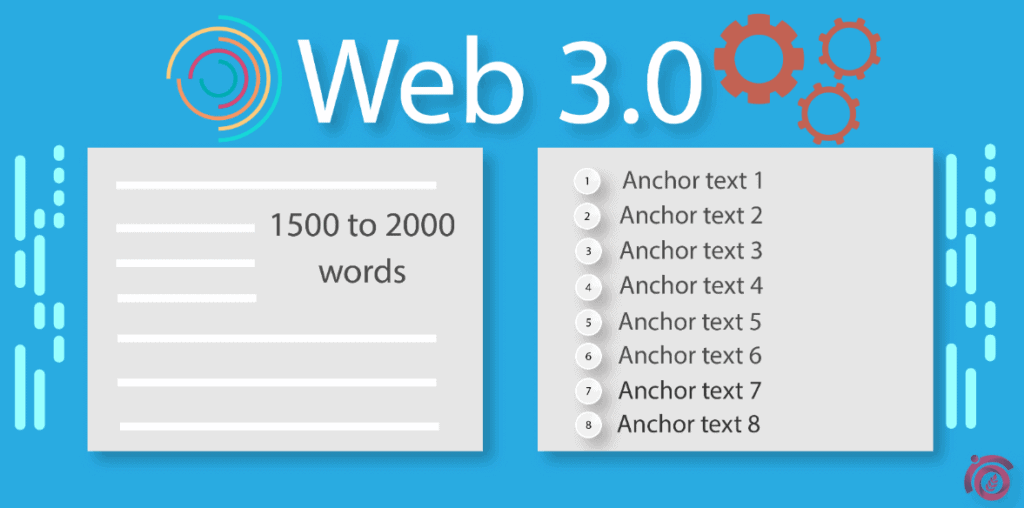
WEB 3.0 is an upgraded version of web 2.0 submission and it is much more powerful and also helps in high SERP exposure. The main steps which are involved with web 3.0 submissions are as follows:
● The submission should contain approx 1500 – 2000 words worth of quality content
● There should be 8 anchors in equal proximity
● The 1st anchor should be an exact match keyword
● The 2nd anchor should be a partial match keyword
● The 3rd anchor should be a phrase match keyword
● The 4th anchor should be an LSI keyword
● The 5th anchor should be a second-tier LSI keyword
● The 6th anchor should be a semantic keyword
● The 7th anchor should be a branded keyword
● The 8th anchor should be a long tail keyword
XV. WEB 3.0 TBL
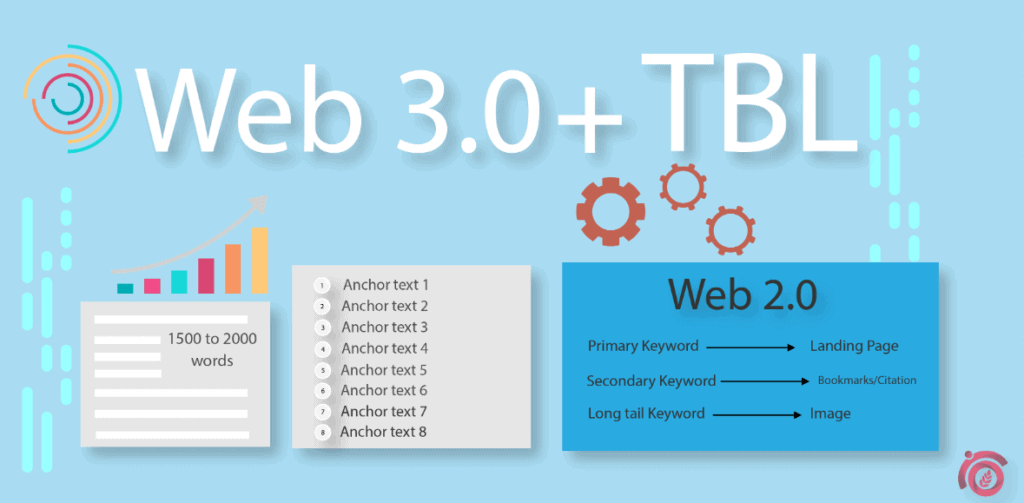
Web 3.0 TBL is much like the normal TBL method where all the anchors will be connected with some of the previous submissions. This will create a tiered network whilst enjoying all the benefit of web 3.0 submission.
XVI. SYNDICATION/AMPLIFICATION

Syndication is the process by which you can amplify your contents across many social networks or high engaging websites. Although, much utilization of the syndication is not recommended unless you have a clear canonicalization set-up for your website. One of the simple ways to create an amplification network is by using IFTTT syndication. The major benefit of syndication is that it will allow you to have a proper brand exposure.
XVII. PODCAST SUBMISSION
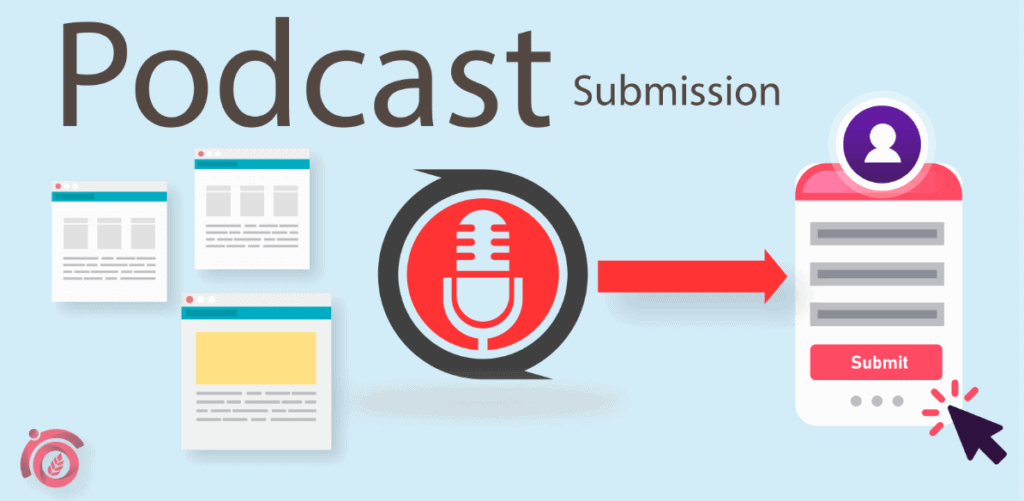
Podcast submission is among the most trending technique which helps in improving overall SEO performance. The process involves podcast submissions on various media outlets and podcast channels. Podcast submission helps in traffic acquisition and help in acquiring high authoritative back-link. It also helps with strong brand exposure and brand awareness.
XVIII. SKYSCRAPER TECHNIQUE

This is a very simple technique for acquiring a backlink, yet it is one of the most effective technique. The exact steps are mentioned as under:
● You definitely need a buzzsumo account in order to make this strategy successfully work
● Pick your favorite search term
● Search the term into buzzsumo and find people who actively have a demand for the topic
● Find the email id for the people who are actively looking for the content
● Send them a mail, by proposing a better content
There are several benefits of using skyscraper technique, some of them are mentioned as under:
● It helps in acquiring high dofollow links
● It also helps in improving the referring domains
● It definitely helps in improving referring IP as well
To conclude, we now have a scenario where we can see that there are several aspects for having a proper link building architecture. At the same time, many KPIs also needed to be followed. A strong back-linking structure will not only help in ranking but will also help in acquiring the strongest SERP visibility.
WHAT IS WEB 2.0 SUBMISSION?
Web 2.0 Submission allows the users of a respective niche site to access information for sharing, networking, and grouping. One of the main advantages of it provides quality do-follow backlinks which in terms of SEO produce great results.
WHAT MAKES IT UNIQUE?
It gives your domain a solid boost in terms of authority and trust. As it is considered as a subdomain for your main domain, so technically this yields a good page authority as well.
Also, keep in mind that relevance is often considered a great metric for link building. In this way, you can build up your overall website authority.
WEB 2.0 SUBMISSION PROCEDURE
Before proceeding with web 2.0 submission, here are few examples of web 2.0 sites for building backlinks:
WordPress, Wix, Tumblr, Blogger, Yola, Over-Blog etc.
It is always a good practice to diversify your link profile by doing multiple variations in terms of link acquisition.
Here are some steps that you need to incorporate while doing web 2.0 submission for your SEO campaign. Here is the Web 2.0 Submission process:
First of all, sign up with an email and log on to the dashboard as shown here:
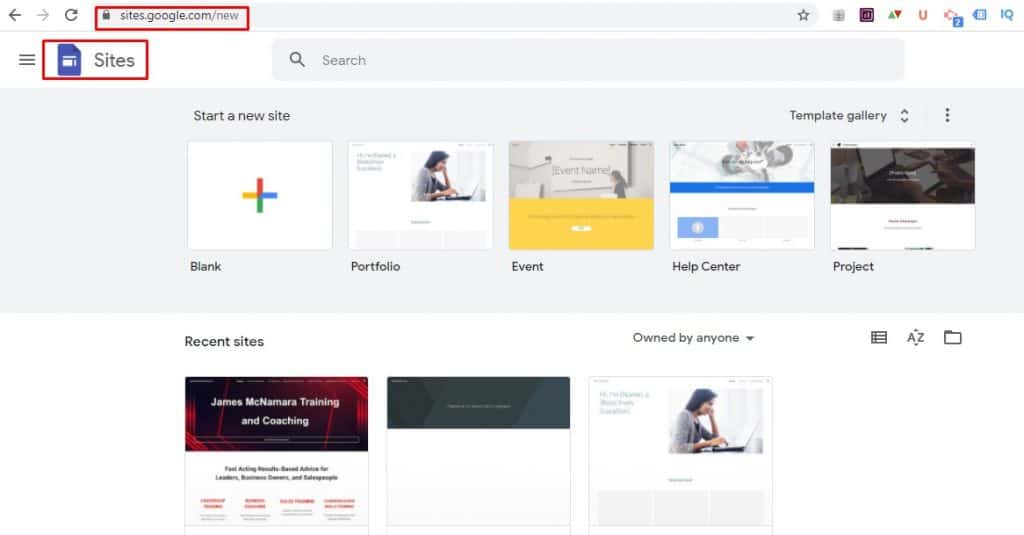
Then pick an attractive theme as desired from the existing list and start customizing accordingly:
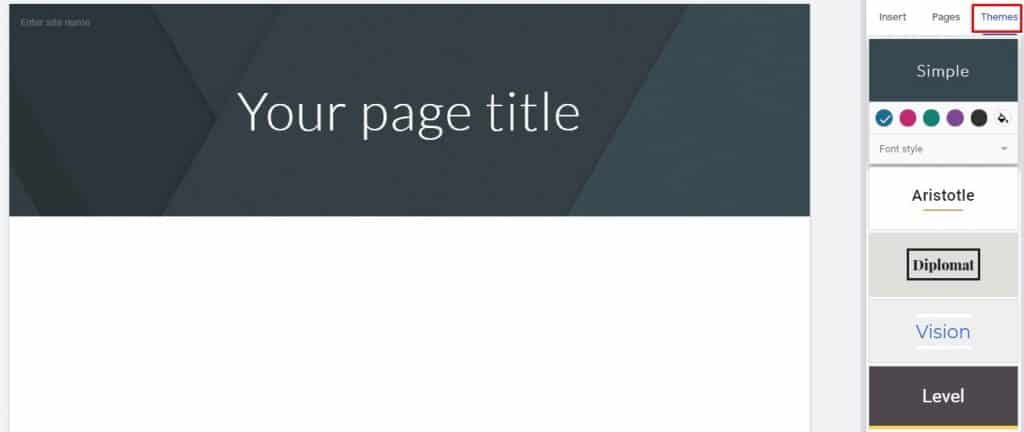
After having the basic setup like email sign up, platform selection also makes sure you choose a perfect URL for your web 2.0.
Sidenote
Many SEOs back in earlier days tend to create web 2.0 by maintaining only keywords while creating the URLs. But that SEO practice is not that SEO friendly enough as it contains EMD (Exact Match Domain) violations. So make sure this practise should be avoided at the time of URL creation. Instead, brand URL practice is a good one you can opt for while creating web 2.0 profiles for your campaign. In this way, brand identity also enhance for your domain.
ENSURE GOOD INTERNAL LINKING PRACTISE
No matter if you are creating web 2.0 for the first time always make sure to put relevant and significant internal linking for each post you made. In this way, the architecture of your blog gets good link flows throughout the site.
INCLUDE EXTERNAL LINK
The internal link part is okay. Now side by side you need to also include external site links to your existing post as well. The best way to include external links is your own domain URLs and also the anchor text that you want your site to rank for. Here is a live demonstration as shown below:
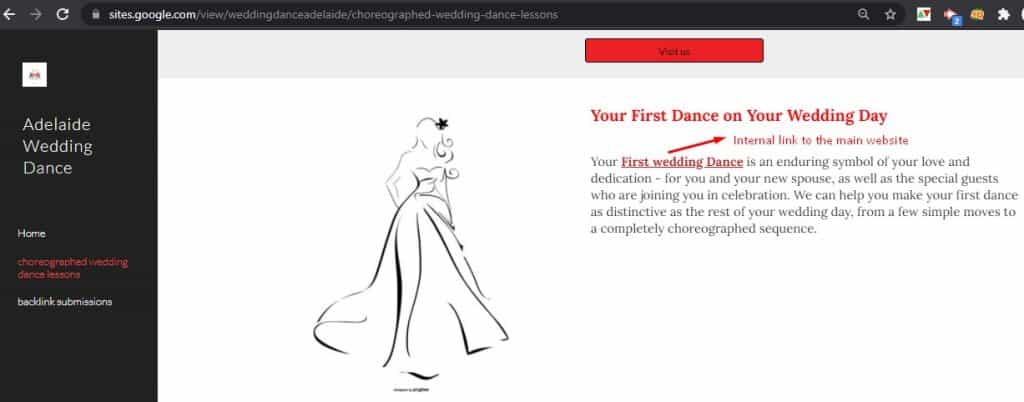
INCLUDE NAP DETAILS OF YOUR BUSINESS
For each and every post’s end make sure to include NAP (Name, Address, Phone Number) details of your business properly. In this way, you can extend your NAP consistency for the business you are working on. The example below for your reference:
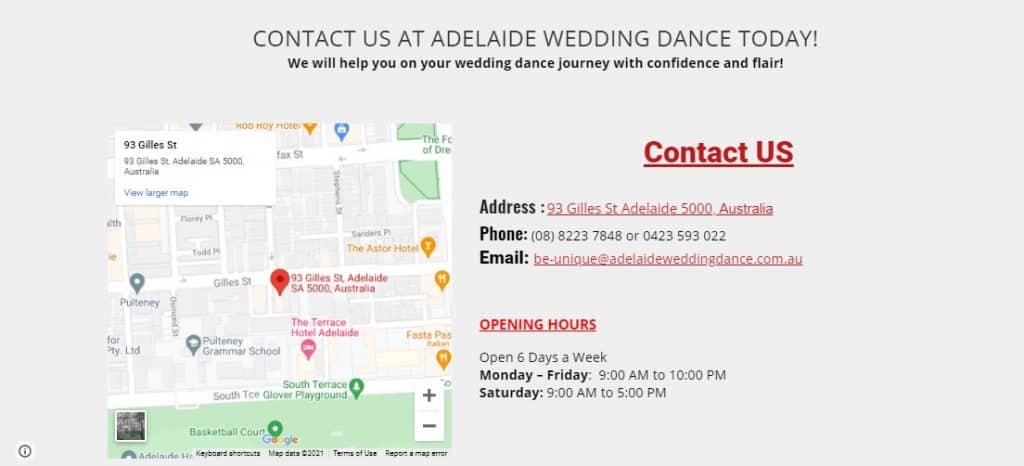
ADD BUSINESS GOOGLE MAPS
One more crucial thing to include in your post is your business Google Map. It gives your web 2.0 much relevance and authority as well as shown in the above instance.
DO NOT FORGET TO INCLUDE SOCIAL MEDIA PROFILE
Before publishing the post for web 2.0 make sure to cross-check and include all social handles for your business in the footer or navigation wherever possible.
CREATE ABOUT AND CONTACT PAGES
It is necessary to keep an about and contact page for your web 2.0 submission. Users can get the details of your business and its vision clearly.
Some web 2.0 blog submission links example here below:
https://adelaideweddingdan.wixsite.com/first-wedding-dance/blog
https://sites.google.com/view/weddingdanceadelaide/choreographed-wedding-dance-lessons
https://gourmetmenow.wixsite.com/gourmetmenow
http://ridgeweddings.blogspot.com/
HOW TO FIND COMPETITOR DOMAIN?
Firstly, go to the search engine settings and set the country where our site is located. Once we do the process, let’s proceed to the later one.
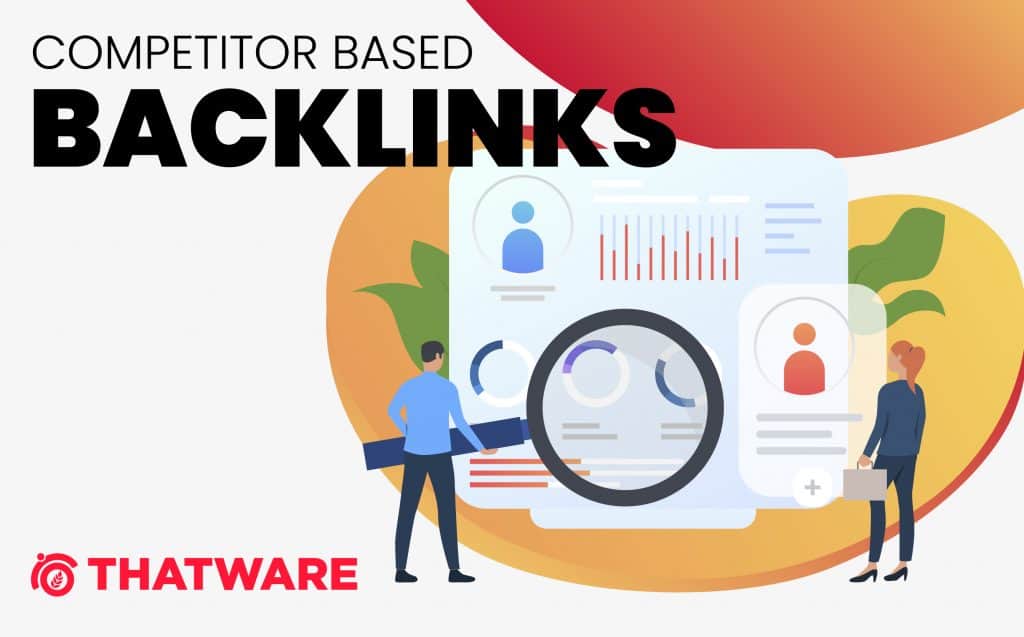
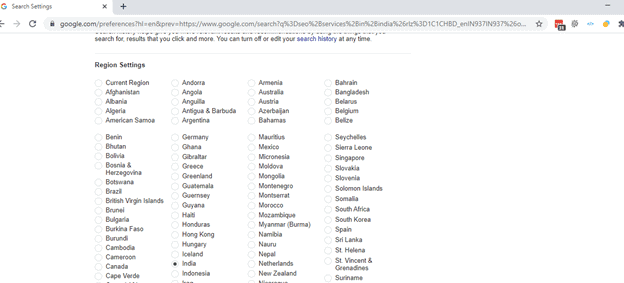
After setting the search engine we will put our keywords with the location and find out our competitors. As you can see in the screenshot below, the competitors are being pointed out.
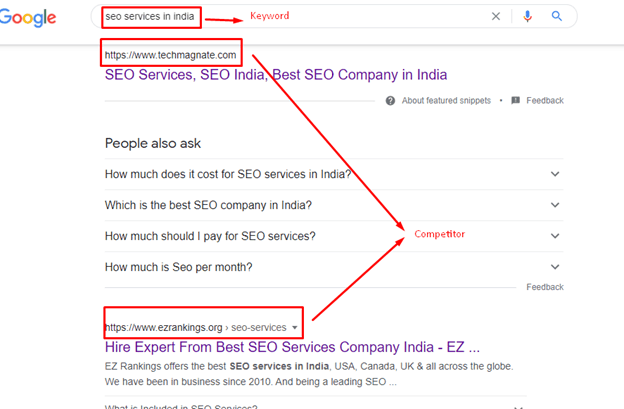
Then we will use SEO SpyGlass v6.51.8 tool to get the competitor links. Just open up the tool, paste your competitor URL and proceed.
STEP 1
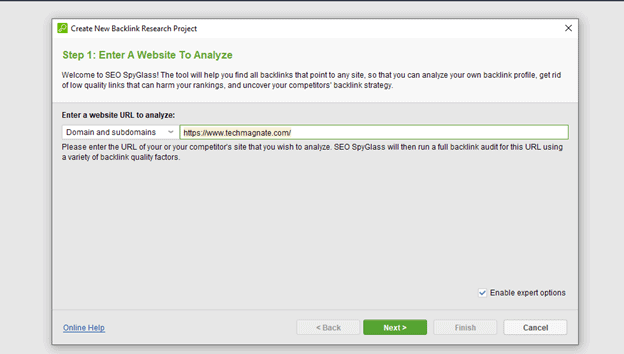
STEP 2
After that, choose your preferred sources that SEO SpyGlass tool should use to collect backlinks from. You can select from the given list as shown on the screenshot below:
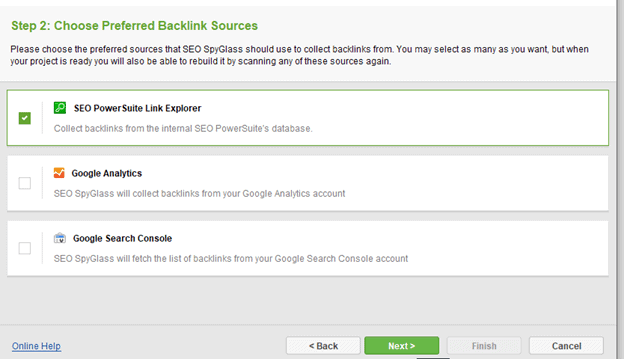
STEP 3
Then, you can set the limit of backlinks from one domain as per your choice, after setting up this step move to the next step.
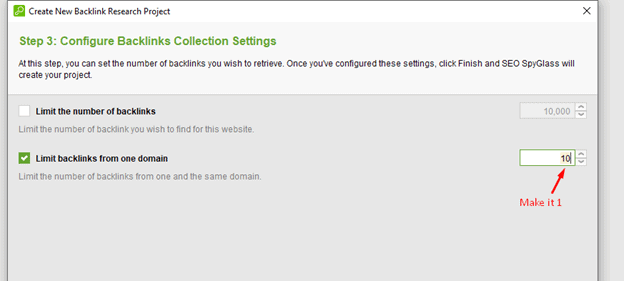
STEP 4 (Go to backlinks section)
Now, after the total analysis, select “Backlinks” section from the dashboard to get backlink insights of the campaign.

STEP 5 (Choose Dofollow from Drop down )
Thereafter, please select Dofollow backlinks from the dropdown list to get the proper list.
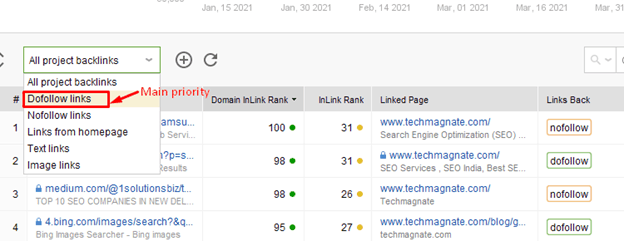
STEP 6
(Finally we will get list of backlinks containing Dofollow, Nofollow, text links, image links competitor links where we can create backlinks for our own site)
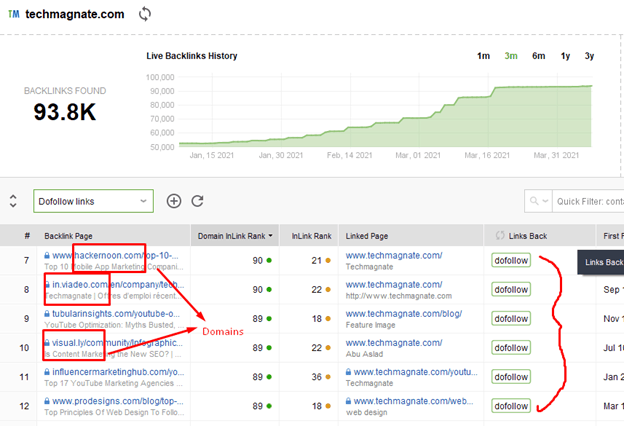
Link Intersection
Firstly, we have to open SEO SpyGlass v6.51.8 tool then go to the below-mentioned section
Domain Comparison àLink Intersection
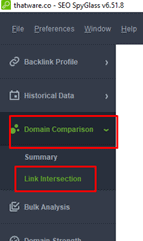
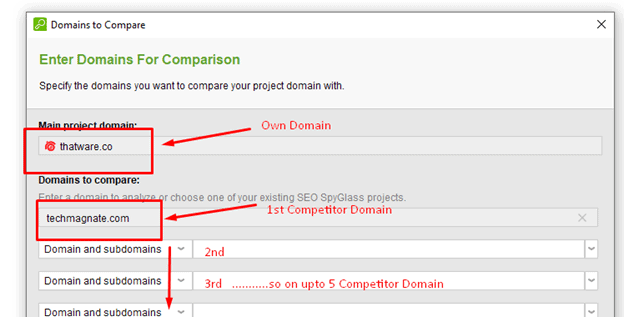
Then we can set the domains with the main project domain with which we want to compare the other domains.
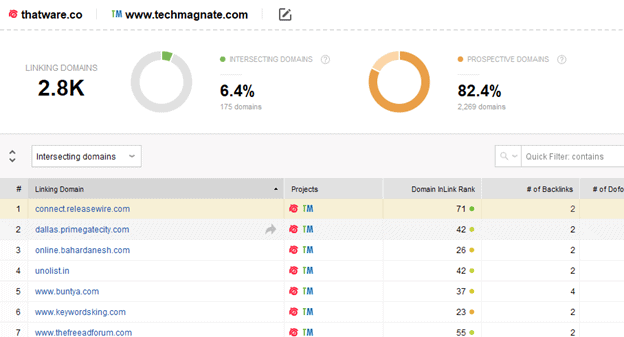
New and Lost links finder
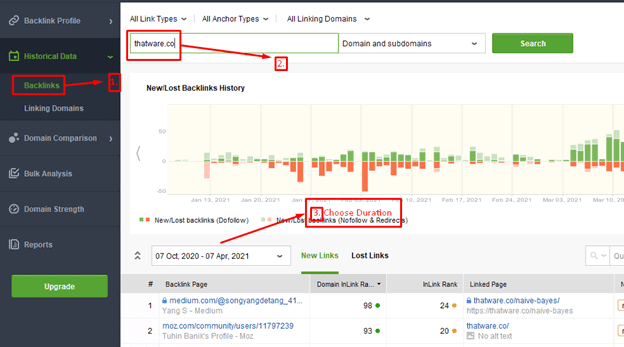
Then in this section, we can have the ratio of new backlink and lost backlink gaining counts, by this section we can determine which links give us much authority to our sites. Also we can set the date filter to know what is the exact time or date the links are being added to the backlink profile or lost.
- How to Find Linking Domains Country wise
After visiting the reports section in the dashboard, you can have the entire backlinks and domain summary. In the backlinks section, you can have the details of the country as well from which country the backlinks are coming from.
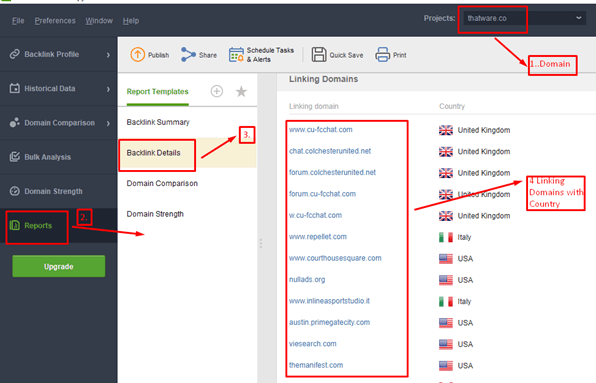
This is how the entire competitor backlink analysis framework has to undertake in order to steal your competitor’s backlinks.


